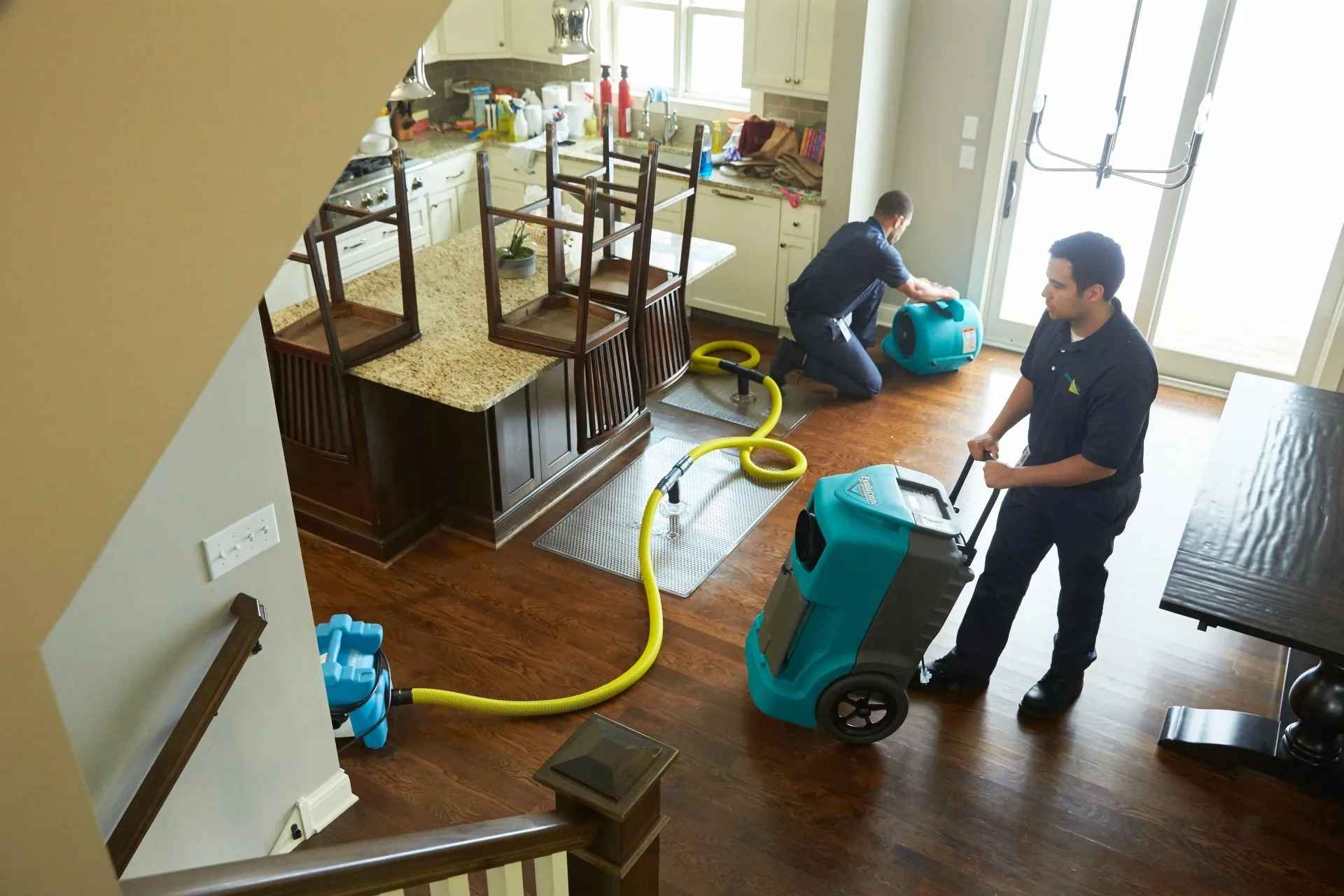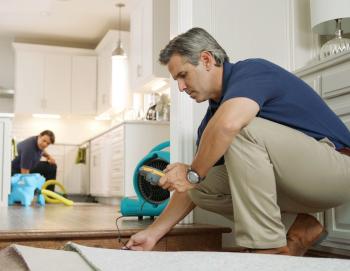Everything About Water Damages Reconstruction: Key Facts and Advantages You Need To Know
Water damage repair is a vital process that every property owner ought to recognize. It entails assessing the sort of damage, whether clean, grey, or black water, and executing a systematic restoration technique. Identifying the signs of water damages early can greatly impact the performance of the remediation. Understanding the steps included and the significance of timely action can prevent further complications. What aspects should property owners consider when making a decision between professional solutions and DIY techniques?
Comprehending Water Damage: Kinds and Causes
What factors contribute to water damages, and how can they be categorized? Water damages can be categorized into 3 main categories: clean water, gray water, and black water. Clean water stems from resources like broken pipelines or rainwater, posturing marginal health and wellness risks. Gray water, which might come from devices like dishwashers or cleaning devices, includes pollutants that need mindful handling. Black water, stemming from sewer or flooding, postures severe health and wellness dangers and needs immediate focus.
The sources of water damages vary. Usual elements include pipes failings, roofing leakages, natural disasters, and poor water drainage systems. In addition, human errors, such as leaving taps stopping working or running to preserve devices, can intensify the trouble. Understanding these types and causes is vital for efficient prevention and remediation methods, guaranteeing that homeowner can take positive actions to safeguard their homes against the damaging impacts of water damages.
Indicators of Water Damage: Just How to Recognize Problems Early
Exactly how can one spot the very early indicators of water damage before it escalates into a much more significant problem? Recognizing these issues promptly can conserve home owners from substantial fixings. Usual indications consist of visible water spots on ceilings or walls, which typically appear as brownish or yellow-colored spots. An additional sign is bubbling or peeling paint and wallpaper, recommending dampness underneath the surface. Stuffy odors can also represent concealed mold and mildew development, a direct outcome of long term wetness. In addition, warping or buckling of floorings might show excess moisture in the underlying structures. Homeowners ought to on a regular basis evaluate areas prone to water exposure, such as cellars, bathrooms, and cooking areas, for any kind of indications of leak or moisture. Finally, a sudden rise in energy bills might hint at unnoticed leakages. By identifying these very early indicators, individuals can take proactive actions to resolve water damages prior to it intensifies.
The Water Damage Restoration Refine: Step-by-Step

Next, the drying out procedure begins, using air moving companies and dehumidifiers to eliminate moisture from wall surfaces, floors, and personal possessions. After the area is extensively dried, cleaning and sanitization occur to remove smells and impurities.
Repair services and restoration job is conducted, which might include changing damaged materials, painting, or redecorating surface areas. Throughout the procedure, documentation is kept for insurance policy purposes, making sure that all activities taken are recorded. Each action is vital to bring back the residential property and guarantee a risk-free living setting for residents
Importance of Timely Repair: Why Performing Quick Issues
Timely repair following water damage is crucial, as delays can bring about escalating problems such as mold development and architectural degeneration. Water can promptly seep into porous products, creating a suitable setting for mold spores to prosper. Within 24-48 hours, mold and mildew can start to create, presenting health and wellness threats and additional making complex reconstruction efforts.

In addition, long term exposure to dampness can damage the architectural honesty of structures, leading to costly repair work and potential safety risks. Acting quickly not only lessens damages but likewise decreases the general cost of remediation. Insurance firms usually prefer timely activity, which can facilitate smoother insurance claims procedures and quicker financial healing for homeowner.
Inevitably, prioritizing prompt repair preserves property value, boosts security, and advertises a healthier living setting. For these reasons, quick activity is crucial in the consequences of water damages, underscoring the relevance of attending to problems as quickly as they occur.
Specialist vs. DIY Remediation: Pros and Disadvantages
When thinking about water damages reconstruction, home owners usually weigh the choices of expert services versus DIY techniques. Price factors to consider play a significant function, as professional repair can be more expensive however might provide exceptional expertise and customized equipment. Each option has its benefits and drawbacks, influencing both the efficiency and performance of the restoration procedure.
Price Factors to consider
While homeowners might take into consideration both professional services and DIY approaches for water damage remediation, each option provides distinct monetary ramifications and advantages. Expert reconstruction services typically feature greater upfront expenses because of labor, competence, and tools. They can speed up the repair process, possibly lessening additional damages and linked expenses. On the other hand, do it yourself repair might appear extra economical at first, as it commonly includes reduced straight expenses. Yet, property owners must consider the capacity for mistakes, which might result in much more considerable damage and higher lasting expenses. Eventually, the selection in between expert and do it yourself remediation depends upon the home owner's spending plan, the extent of the damage, and their desire to invest time and effort right into the repair process.
Proficiency and Tools
A notable distinction between expert and DIY water damages reconstruction depends on the know-how and tools offered for each strategy. Experts have specialized training and experience, enabling them to analyze damages properly and implement effective remediation methods. They use advanced devices, such as industrial-grade dehumidifiers and wetness detection tools, which can substantially these details expedite the drying procedure and prevent further difficulties like mold growth. In comparison, do it yourself remediation often depends on fundamental house tools and approaches, which might be much less reliable and can bring about incomplete repairs. While DIY can save cash, it likewise brings risks, consisting of potential carcinogen and extensive damage otherwise performed properly. Visit Your URL Inevitably, picking between professional solutions and DIY techniques depends upon the intensity of the damage and the house owner's capabilities.
Advanced Techniques in Water Damage Restoration
Water damage restoration has actually generally relied on basic methods, advanced strategies are currently transforming the sector. Advancements such as thermal imaging modern technology enable remediation professionals to identify concealed wetness behind walls and under floorings, guaranteeing comprehensive drying out processes. Additionally, using high-capacity dehumidifiers increases dampness removal, greatly minimizing the risk of mold development.
One more development is the execution of antimicrobial treatments, which prevent mold and mildew and germs growth, securing the wellness of owners. Advanced drying out equipment, including air movers and specialized drying out floor coverings, enhances air circulation and helps with quicker dissipation of moisture.
In addition, real-time monitoring systems currently give constant analyses of dampness degrees, optimizing and enabling timely interventions reconstruction efforts. These improvements not only enhance the efficiency of water damage repair yet additionally add to far better outcomes for properties, reducing long-lasting damage and expenses connected with water-related cases.
Protecting Against Future Water Damages: Tips for Homeowners
To stop future water damages, property owners ought to take on positive procedures that attend to prospective susceptabilities in their visit our website buildings. Normal upkeep of gutters, downspouts, and roofs is necessary; making sure these are clear of particles can protect against water buildup. Homeowners need to also inspect pipes systems for leaks and replace worn-out pipes immediately. Mounting sump pumps in cellars can fend off flooding throughout hefty rainfalls, while utilizing water alarms can give very early detection of leaks.
In addition, sealing doors and windows aids stop rain invasion. Landscape design ought to guide water far from the structure, employing appropriate grading and water drainage services. Property owners could likewise think about waterproofing cellars and crawl rooms to additional minimize risks. Eventually, maintaining an upgraded stock of home things can help in insurance cases need to harm take place. By implementing these methods, house owners can meaningfully decrease the possibility of water damages and protect their investments.
Frequently Asked Concerns
How Much Does Water Damages Restoration Typically Price?
Water damage repair typically sets you back in between $1,000 and $5,000, depending upon the level of the damages, the kind of products impacted, and the location. Complex cases may exceed this variety substantially, calling for professional analysis.
Will My Insurance Cover Water Damages Reconstruction Expenditures?
Insurance policy insurance coverage for water damage remediation differs by policy and situations. Commonly, house owners' insurance coverage may cover problems from unexpected occurrences, yet exclusions might apply. It is advisable to examine the policy information or speak with an insurance policy agent.
For how long Does the Remediation Refine Normally Take?

What Should I Do Promptly After Discovering Water Damages?
Upon discovering water damages, one ought to immediately turn off the water resource, remove beneficial items from the afflicted area, and assurance correct ventilation. Looking for specialist assistance is important for efficient damage control and repair.
Are There Certain Materials That Are Resistant to Water Damages?
Certain products, such as treated timber, concrete, and fiberglass, show better resistance to water damage. In addition, synthetic fabrics and water resistant coatings improve longevity, offering effective defense versus wetness and possible damage in time.
Water damages can be identified right into 3 primary classifications: tidy water, grey water, and black water. When considering water damages repair, home owners frequently evaluate the options of professional solutions versus Do it yourself approaches. While home owners may consider both expert services and Do it yourself strategies for water damage reconstruction, each alternative presents distinctive monetary ramifications and advantages. Water damage reconstruction generally sets you back between $1,000 and $5,000, depending on the degree of the damage, the type of materials affected, and the location. Upon discovering water damage, one ought to right away turn off the water source, remove valuable items from the affected location, and guarantee correct ventilation.